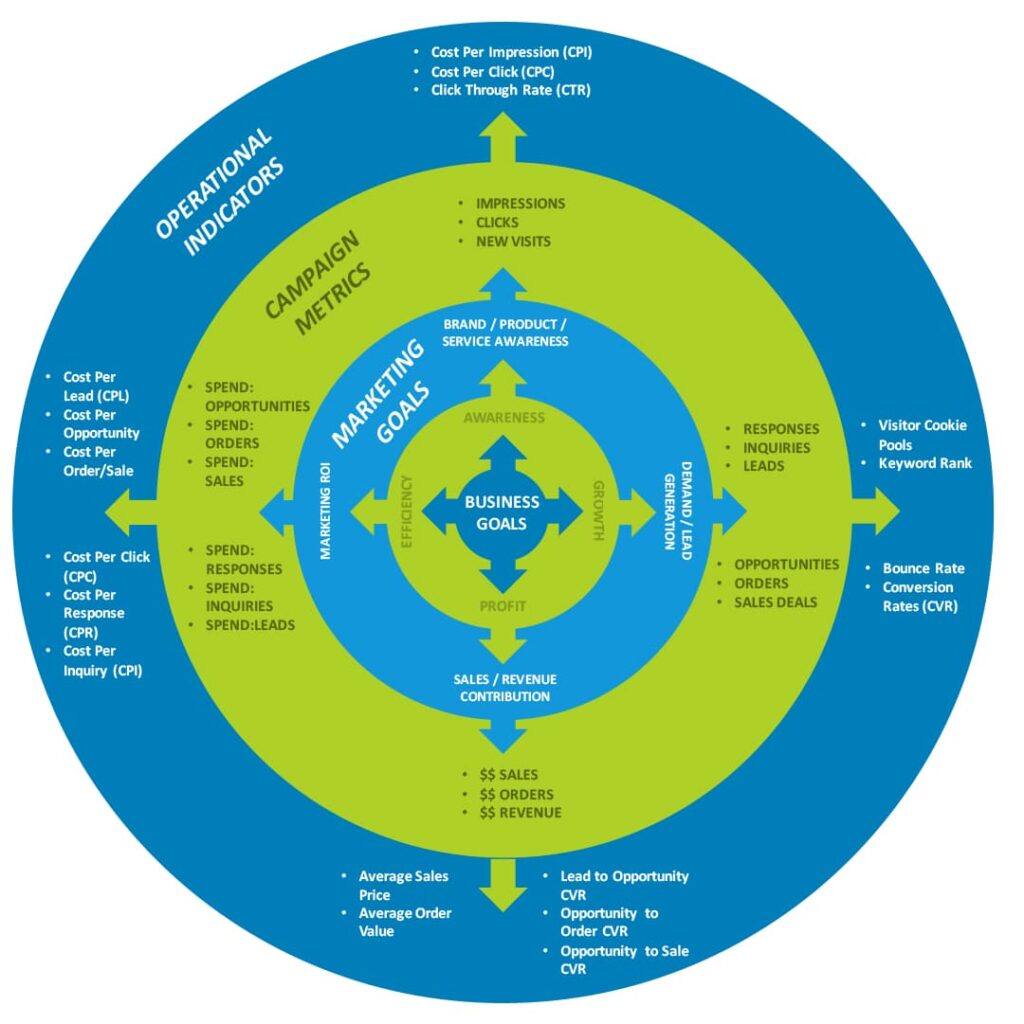Marketing is an investment. And as with any investment, your company needs to know whether it is paying off.
As digital marketers, we are blessed with an abundance of data. Every click and action can be tracked through various tools and systems, giving us close to real-time visibility of campaign performance. It’s really quite amazing when you compare this to 15+ years ago when we would wait patiently (a month at best) to gather all of the postal and fax-back responses from our direct mailer. Fax what? 😂
The challenge now is less about data and timeliness and more about data overload. Are CTRs more important than CPCs? What about CVRs and CPLs? What the heck is EPMI and should you even care? With such an abundance of data available, are you even tracking the metrics that matter? Let’s take a look.
Lame KPI #1: Keyword Rank
Keyword rank is still a common KPI for companies looking to measure SEO success. The problem is that many variables affect rank ” the #1 organic listing seen by one person can often be different when seen by another person conducting the same search. Keyword rank can differ depending on location, device and even past search behavior.
Additionally, there are other factors impacting organic visibility and click-through. For example, featured snippets (also known as rank #0) appear above the #1 organic listing. PPC ads can also push organic listings down the page, very often below the fold on mobile devices.
While a page #1 rank can provide better visibility to searchers versus not ranking at all, should it be considered a true measure of SEO success? At best, SEO rank is an indicator of whether traffic will come to your page. Therefore, a better KPI would be to look at actual visits to your pages from SEO referral traffic. Even better is the ability to track these SEO visitors through to a conversion – be it a response, inquiry, lead, opportunity or sale.
Lame KPI #2: Facebook Likes
While the number of likes and followers may have been popular social KPIs several years ago, things have moved on since then. Today, successful Facebook campaigns aren’t dependent on having a large fan base, particularly with the rapid decline of/non-existent organic social reach. In fact, having many page likes, with very little engagement from fans, can often cause more harm than good – particularly if those “fans” were acquired in a shady way.
When it comes down to it, fans don’t mean much unless you have a plan for using them. Similar to keyword rank, the number of Facebook fans should not be seen as an end point but more of a means to an end; an indicator of your addressable audience for your paid social marketing activities. With this in mind, it pays to think beyond just page likes. For example, building cookie pools that can be utilized for retargeting across social, search and display helps to increase your addressable audience even further.
So what are the KPI alternatives to Facebook page likes? Similar to SEO, look to tie social KPIs back to measures like visits, leads and sales generated from Facebook referrals or other social media channels. Depending on your tracking capabilities, it is also valuable to know how these referrals are assisting conversions of other channels further down the funnel.
Lame KPI #3: Retweets
Let’s face it – unless you are Ellen, One Direction or President Obama, your marketing-related tweet isn’t going to be retweeted hundreds-of-thousands of times. Most companies are lucky to hit the tens or twenties.
Very often, marketers focus too much on activities rather than outcomes. People may argue that social shares can “help with SEO,” but how do you really measure the impact of this on actual business outcomes? Can you say with complete certainty that 10 retweets resulted in a 10 percent increase in sales this month?
As with Facebook page likes, it is important to tie the KPI back to outcomes. Rather than counting shares or retweets, focus instead on how much additional traffic these sent to your pages and whether these visits resulted in a lead or a sale.
Lame KPI #4: Impressions
Awareness has always been a goal that companies have struggled to apply meaningful metrics towards. Outside of expensive and lengthy brand recall studies, impressions are commonly used as an awareness metric to show the amount of reach an ad has managed to achieve. But just because an ad was served up to someone, how do we know whether that person saw it, remembered it and ultimately took action?
Taking action is important here, even when considering early funnel metrics tied to awareness. We need to look beyond passive metrics alone (such as impressions) and tie awareness efforts to audience actions. Metrics like clicks provide a good early indicator of interest for those paying attention to your message. New web visitors and new names generated as a result of your awareness campaign are even more valuable.
Lame KPI #5: Time Spent on Page
You know what it’s like when you are browsing the internet. You have multiple windows open, get distracted by your spouse, or child, or dog or co-workers. You may get up for a drink or a snack, engage in some office banter or go for a bathroom break. Before you know it, 10 minutes have passed and in the meantime, someone somewhere is whooping about how long you’ve spent looking at their page.
Rather than looking at the time that visitors “spent on page,” focus instead on key actions a visitor made while there. Did they comment on a blog post? Or download a whitepaper? Or sign up to a newsletter? Or asked for someone to contact them? These are more valuable actions to track compared to time spent, particularly when these actions provide an indicator of actual interest or intent to purchase.
Lame KPI #6: Bounce Rate
Bounce rate helps to provide an indicator for a few different things:
- Relevance – Is your keyword or audience targeting tight, or does it need improvement?
- Bridge – Is there a consistent bridge between your targeting, your ad message and your landing page that is aligned with visitor expectations, or does it bait and switch?
- Landing Page – Does your landing page provide the information needed for the visitor to convert, or does it need to be better optimized?
While these are important indicators to know, they are just that ” indicators of how we can better build and design campaigns to drive more responses, inquiries, leads and sales (the real KPIs). You may have noticed a pattern emerging here…
What are Meaningful KPIs?
Over the years, while technology and channels have changed and evolved, the principles of marketing remain the same – it’s about selling stuff to make a profit.
To show marketing value:
- Business goals are at the core and marketing goals should align directly to these.
- Campaign metrics help to determine the KPIs that quantify marketing goals.
- Operational indicators help to inform the day-to-day running of your campaigns in order to meet KPI targets.
Business goals will often revolve around things like awareness (in order to sell), growth (of sales), profit (from sales), and efficiency (of selling for greater profit). Whatever your company’s specific business goals are, your marketing goals should be directly aligned with these since these are what your company execs care about most.
Marketing KPIs (e.g. new visits, leads at a 10 percent YoY increase, marketing generated sales, marketing spend vs. orders generated) can then be established that directly tie to these goals. Importantly, overall marketing KPI targets should be set and measured against ” and cascade down to ” individual campaigns.
*EXAMPLE MARKETING KPI SCORECARD – TARGETS VS. ACTUALS
Operational indicators (such as cost-per-click [CPC], click-through-rate [CTR], conversion-rate [CVR], or bounce rate) are supporting measures that provide performance or efficiency indicators for your KPIs. While these indicators are often too much information for the likes of your company execs, they can help to inform the day-to-day operational management of work and are particularly useful to look at if actuals are not meeting targets.
As a digital marketer, it is important that you are always showing the value of your marketing efforts by measuring the metrics that matter: the metrics that tie to company goals… the metrics that make marketing departments a profit (not cost) center! To help, AIMCLEAR created a handy KPI cheat sheet. Be sure to download yours today and say GOODBYE to lame marketing metrics forever.










